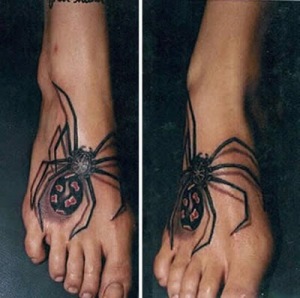Posted on June 14, 2013 by Jose
![MagicalShelf[1]](https://opticalillusion.wordpress.com/wp-content/uploads/2012/08/magicalshelf1.jpg?w=468)
The magical shelf optical illusion for books
It’s a real product. If you think about it real hard, you might be able to figure it out and make it for yourself. Otherwise, you’ll have to buy it.
Filed under: curious, optical illusion | Leave a comment »
Posted on November 30, 2010 by Jose
![don-quxote-coin-palau[1]](https://opticalillusion.wordpress.com/wp-content/uploads/2010/10/don-quxote-coin-palau1.jpg?w=468&h=343)
In a gallery of optical illusions on Facebook, one of the items that gained my attention was this Republic of Palau silver coin. The author behind Don Quixote motive (engraved on this coin) is great #Sandro Del Prete, and apart from the illusion, I was even more baffled with the Palau Republic. I have never heard of Palau. Oh, and the illusion should easily be seen, specially if you’re a Don Quixote fan, like I am…
Filed under: art, hidden, optical illusion | Leave a comment »
Posted on November 25, 2010 by Jose
![DSC00074[1]](https://opticalillusion.wordpress.com/wp-content/uploads/2010/10/dsc000741.jpg?w=468&h=352)
Here’s a nice submission. This one was sent in by John Newman, who has seen this type of illusion hundreds of times around the net, but never in real life!
Remember when doing our duty, most of the time we let our thoughts slip by, and before you know it – illusions start appearing in front of our eyes! The thing is… do you see all those gray spots appearing at the white intersections below? They aren’t really there (just so that you know)…
Filed under: classics, effects, optical illusion | Leave a comment »
Posted on September 25, 2010 by Jose
Beautiful tattoo for Foot, for those who love spider an optical illusions.
This kind of tattoos can be useful to scare people

Filed under: art, body art, optical illusion, tatoos | Leave a comment »
Posted on June 15, 2010 by Jose
This poster holds an amazing and creative design for the zoo.

Filed under: ads, optical illusion | Leave a comment »
Posted on March 19, 2010 by Jose
Horizons is the name of this piece of art by Neil Dawson . It is located in New Zealand on “The Farm,” a large private art park owned by Alan Gibbs, a New Zealand businessman.
Curious : If you can’t see the optical illusion you may have schizophrenia!



Filed under: anamorphism, artists, nature, optical illusion | Leave a comment »
Posted on November 20, 2009 by Jose

Emergence of images refers to the unique human ability to aggregate information from seemingly meaningless pieces, and to perceive a whole that is meaningful. This special skill of humans can constitute an effective scheme to tell humans and machines apart. This paper presents a synthesis technique to generate images of 3D objects that are detectable by humans, but difficult for an automatic algorithm to recognize. The technique allows generating an infinite number of images with emerging figures. Our algorithm is designed so that locally the synthesized images divulge little useful information or cues to assist any segmentation or recognition procedure. Therefore, as we demonstrate, computer vision algorithms are incapable of effectively processing such images. However, when a human observer is presented with an emergence image, synthesized using an object she is familiar with, the figure emerges when observed as a whole. We can control the difficulty level of perceiving the emergence effect through a limited set of parameters. A procedure that synthesizes emergence images can be an effective tool for exploring and understanding the factors affecting computer vision techniques.
Filed under: 3D illusion, curious, optical illusion | 1 Comment »
Posted on July 20, 2009 by Jose

When slightly tilted line segments are aligned horizontally like the figure above , the whole array appears to tilt toward the tilt of the line elements.
This is a reversal efect of the Zollner illusion or acute-angle contraction.
Filed under: effects, optical illusion | Leave a comment »
Posted on July 5, 2009 by Jose

A friend sent me our newest exhibit. We had some egg illusions in the past, but have to admit this is different. In its core, this optical illusion is very similar to the famous Missing Part test. Additionally, it may remind you of those missing China men, extra Leprechauns, Mad Scientist soccer team… you know what I mean. To make you understand what is going on around here, let me explain first. In the first card (A) we have one chicken and 8 eggs. Cut this card in 4 pieces (like outlined below), and then again assemble it in a different matter (card B), resulting with proper rectangular image. You will get our original chicken, but the number of eggs this time is different. Additionally, there is a missing piece in this newly assembled card. Why is that? If the surface of both puzzle cards is equal, how can one be missing a piece? Hint: are the surfaces really equal? You tell me! Remember, there is more than one optical illusion present here.
From Archimedes Lab.
Filed under: classics, curious, optical illusion | Leave a comment »
Posted on June 29, 2009 by Jose

I’ve been posting Sandro Del Prete’s optical illusion artworks for a long time. Today I bring you one of his awesome impossible paintings, not so many people even heard of. Now little bit of Sandro’s biography.
Sandro Del-Prete was born in 1937, and is a Swiss artist who paints figures, situations and processes that cannot exist in the real world. Comparisons can be drawn between Del-Prete and Escher’s artwork, although they differ in subject matter, style, mood and technique. Del-Prete greatly admires Escher and believes that they are ‘kindred spirits’, however the viewer will find very little mathematical precision in Del-Prete’s work, something that is always present in Escher’s work.
Filed under: artists, imposible objects, optical illusion | Leave a comment »
![MagicalShelf[1]](https://opticalillusion.wordpress.com/wp-content/uploads/2012/08/magicalshelf1.jpg?w=468)




![don-quxote-coin-palau[1]](https://opticalillusion.wordpress.com/wp-content/uploads/2010/10/don-quxote-coin-palau1.jpg?w=468&h=343)
![DSC00074[1]](https://opticalillusion.wordpress.com/wp-content/uploads/2010/10/dsc000741.jpg?w=468&h=352)








